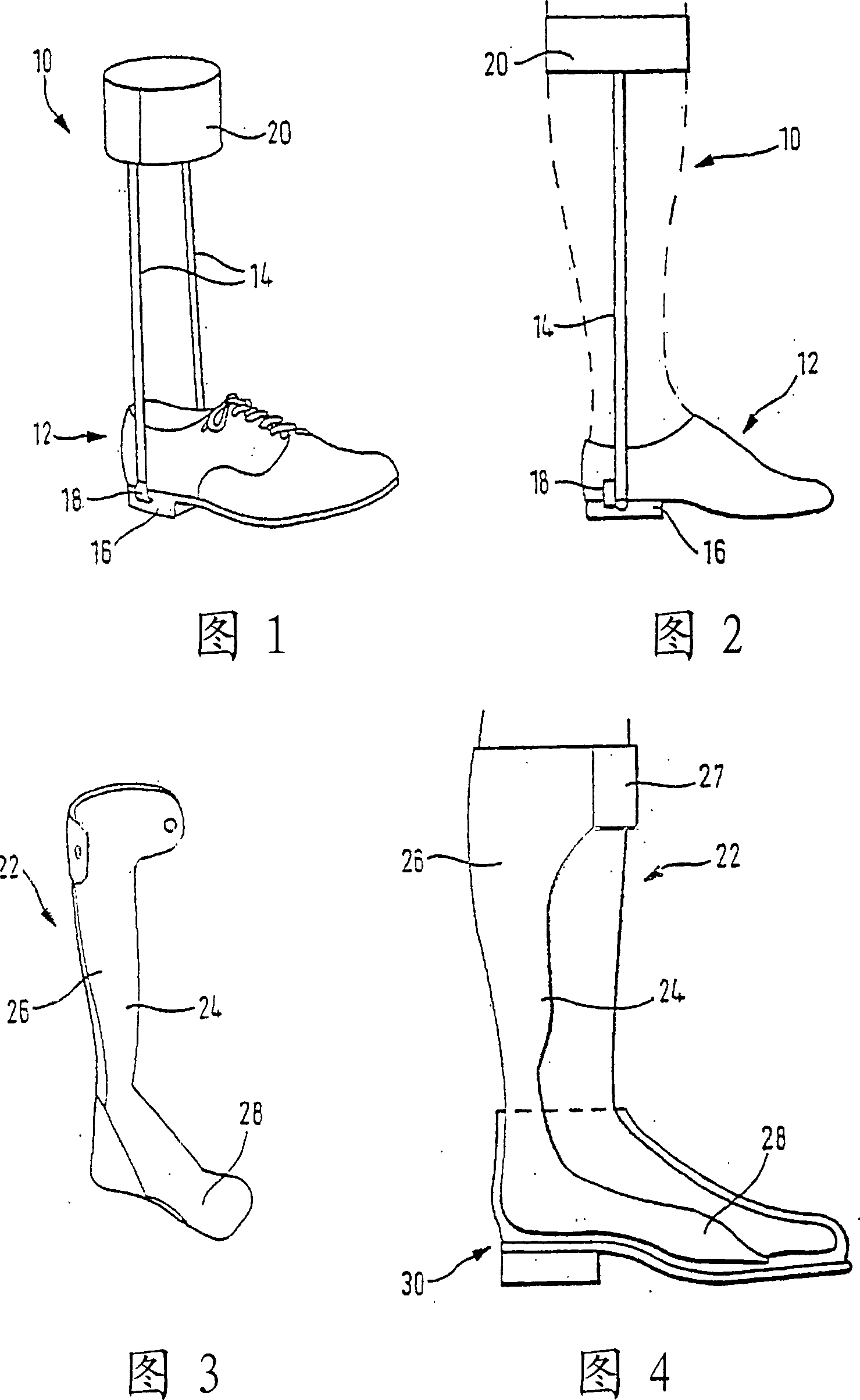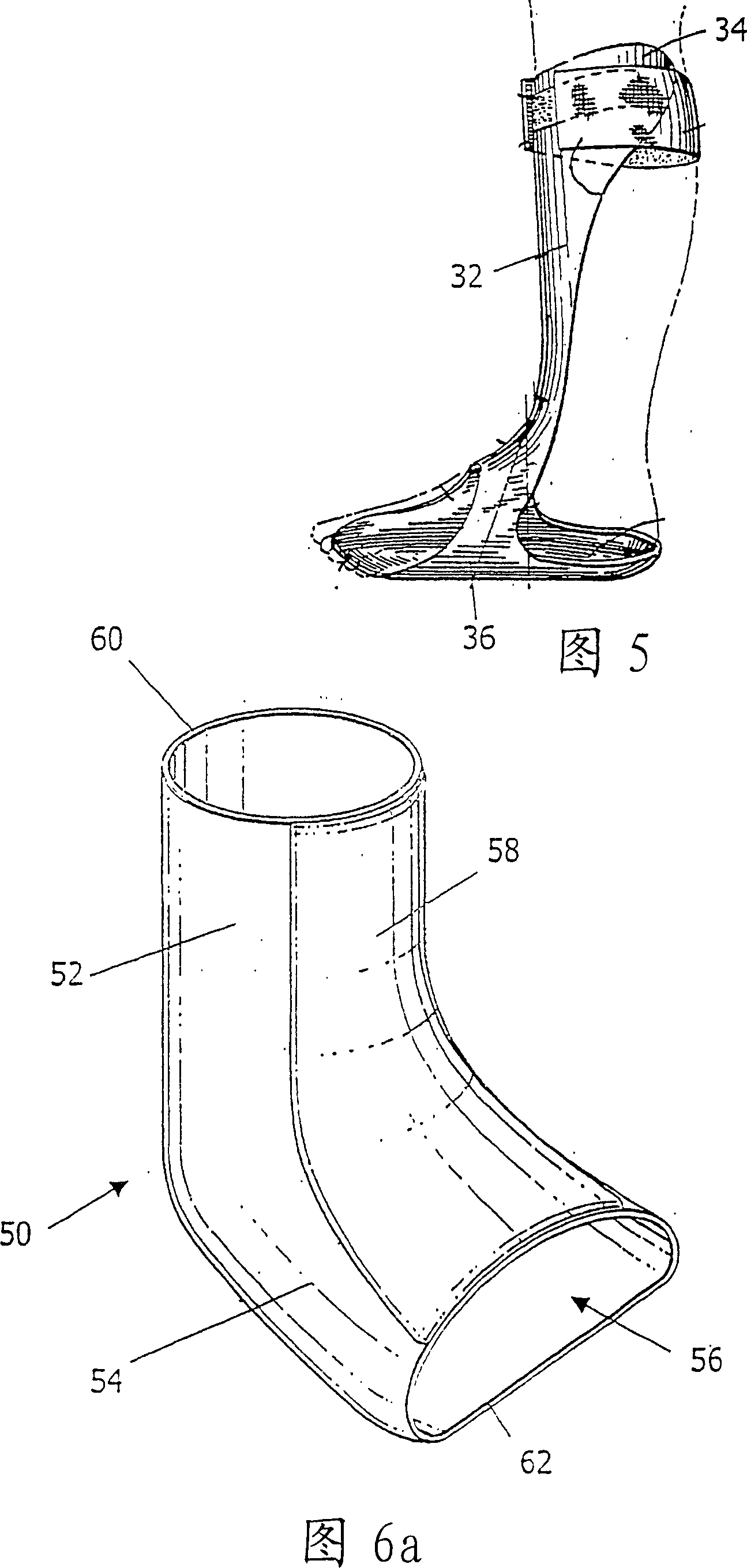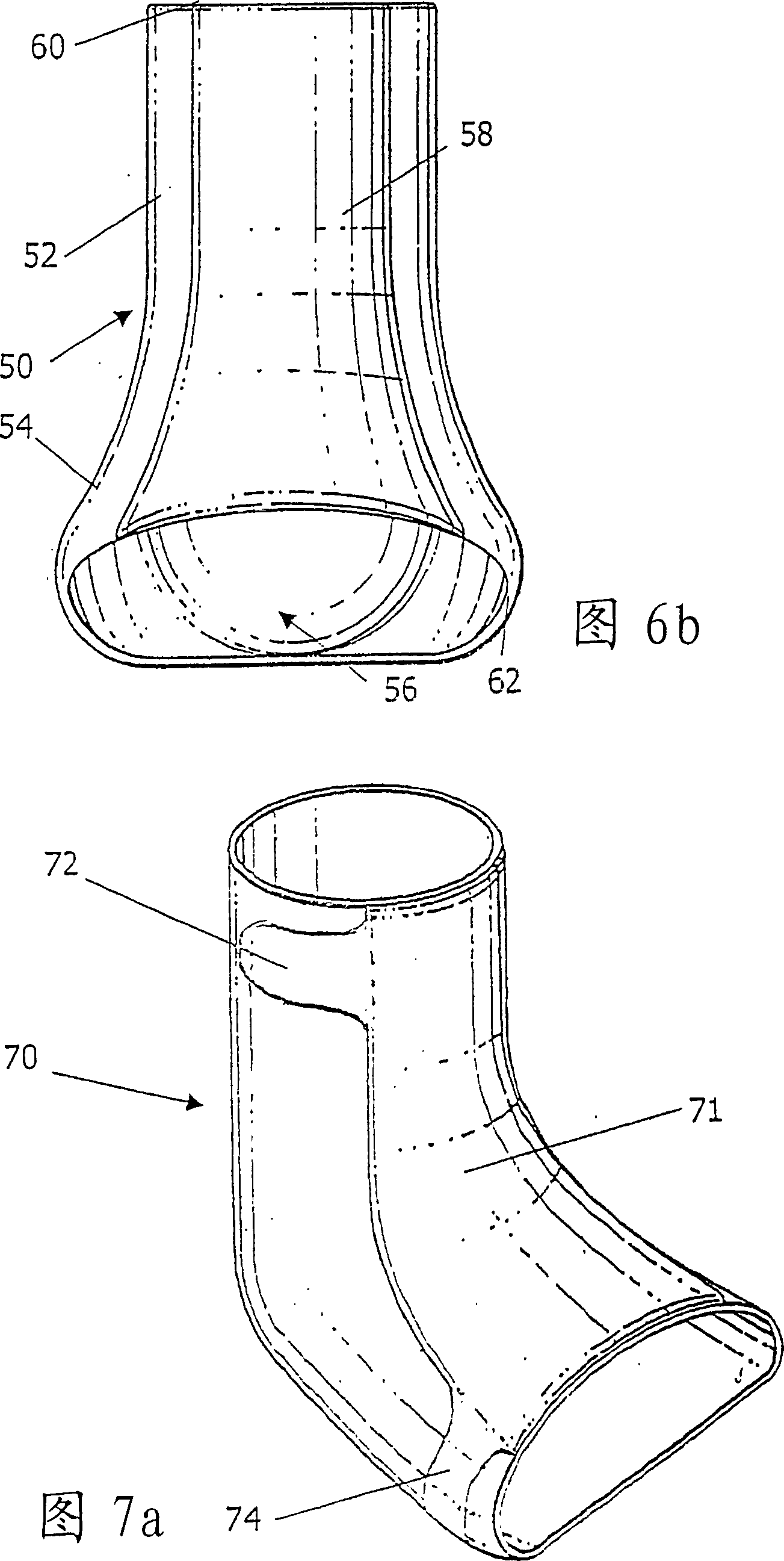Ankle-foot orthosis
A technology of ankle-foot orthosis and orthosis, which is applied in medical science, non-surgical orthopedic surgery, foot bandages, etc., can solve the problem of expensive devices, achieve the effect of fast putting on and taking off, and reduce the cost
- Summary
- Abstract
- Description
- Claims
- Application Information
AI Technical Summary
Problems solved by technology
Method used
Image
Examples
Embodiment Construction
[0032] Figure 6a is a perspective view of an embodiment of the present invention. The orthosis in Figure 6a shows what it would look like when worn by a patient (the patient's foot and ankle have been omitted for clarity). When not worn by the patient, the orthosis assumes an approximately two-dimensional shape for ease of storage.
[0033] As shown, the orthosis includes a generally sock-shaped elastic structure 50 . The sock comprises a first tubular portion 52, and a continuous second tubular portion 54, which in most cases is integrally formed with the first tubular portion.
[0034]The first and second tubular portions are arranged at an angle to each other so as to form, at least in use, a generally L-shaped inner cavity 56 sized to accommodate a patient's foot and ankle (not shown). and fit tightly around it.
[0035] Elastic flexible ribs 58 are provided on the structure and extend along the dorsum of the patient's foot from the proximal end 60 of the orthosis (whic...
PUM
 Login to View More
Login to View More Abstract
Description
Claims
Application Information
 Login to View More
Login to View More - R&D
- Intellectual Property
- Life Sciences
- Materials
- Tech Scout
- Unparalleled Data Quality
- Higher Quality Content
- 60% Fewer Hallucinations
Browse by: Latest US Patents, China's latest patents, Technical Efficacy Thesaurus, Application Domain, Technology Topic, Popular Technical Reports.
© 2025 PatSnap. All rights reserved.Legal|Privacy policy|Modern Slavery Act Transparency Statement|Sitemap|About US| Contact US: help@patsnap.com



